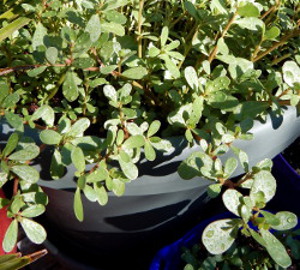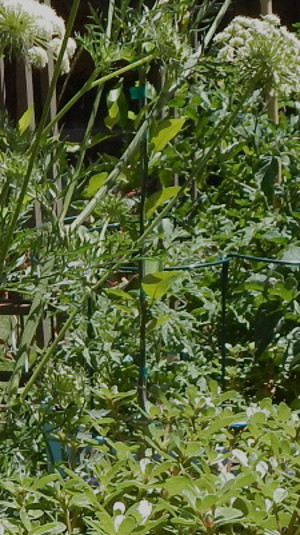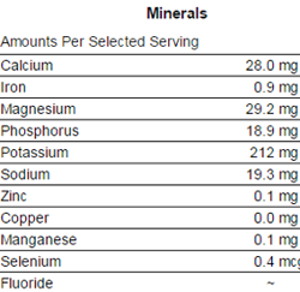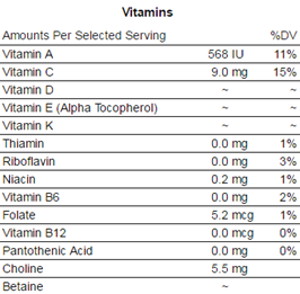
7/4/2016 ~ Purslane is so easy to grow that it’s often considered a weed.
This year after baby grasshoppers ate my collards to the stem, which was my fault because I planted the collards so late that the baby grasshoppers were hatched and hungry. But, the upside is that in the otherwise empty pot, purslane came up. And, while I was wondering if it paid to try and plant more collards, the purslane flourished.

In another image, purslane is at the bottom of the picture. I love the white carrot flowers, so I included them in the photo. Basically, it’s too sunny right now to get a good image. So, including the carrot flowers, which little bees love, maybe because each of those flower clusters is made up of dozens if not hundreds of tiny flowers, didn’t do any harm.
When you find purslane in your yard, maybe snuggled into your grass, it may have much smaller leaves than mine, which I water.
If you pick purslane when it’s flowering, fully expect to get some seeds. Put that in a pot, just lay it on some rich soil, and before you know it you’ll have tiny, red leaved seedlings.
Raw purslane tastes a little like cooked spinach. My overall impression of its flavor is that it’s little – not much flavor at all.
If you like peanuts from the shell, preferably unsalted, they go very well with fresh picked purslane stems and leaves. You want to avoid the salted peanuts in shells because the beauty of purslane is its potassium content: our bodies use potassium and sodium when we exert any energy. It’s easy to overload on salt/sodium, and hard to balance it with potassium since we need a basic 4,700 mg of potassium a day, just to start. (If you scrolled down to read this, that small action took some potassium. Read more.)
Eating a cup of raw purslane gives you 212 mg of potassium, while a cup of cooked purslane gives you 561 mg. I think the difference is that raw purslane isn’t as compact as cooked.
If you’re sitting by a pot of purslane and eating it with peanuts, it’s pretty easy to eat a cup, even two cups. Eating a half cup of dry roasted peanuts, unsalted, gives you 480.5 mg of potassium. So, having purslane and peanuts for breakfast or lunch is a pretty good way to get a quarter of your daily potassium requirement. As an aside, Eating a quarter cup of peanut butter gives you about 500 mg of potassium.
By eating potassium rich foods you reduce your risk of kidney stones by half and your risk of stroke by nearly half. Read more.
The nutrition charts are for 1 cup of raw purslane and are taken from SELFNutritionData ~ Read more.


